In the industrial, energy and infrastructure sectors, preventive maintenance and regular monitoring of installations are essential. Given the complexity of the environments to be inspected - confined spaces, great heights, submerged areas - technological solutions are multiplying. Among them, two approaches stand out: drone inspection and robotic camera inspection. So which should you choose, depending on your needs in the field? Find out in this article, Multinnov guides you in choosing the solution best suited to your needs.
Inspection by drone or robot: two technologies to enhance performance
Technology-assisted visual inspection is constantly evolving. Gone are the days of gondolas and costly dismantling: drones and robotic cameras now offer fast, accurate and much safer alternatives.
Inspection drones, such as the Stereo2 developed by Multinnovare designed to operate in complex indoor environments or at great heights. Thanks to their automatic stabilization, position sensors and 4K cameras, they are capable of capturing detailed images even in areas that are difficult for humans to access. These drones can navigate without GPS, in confined or dark environments, while guaranteeing excellent data quality.
Robotic cameras on wheels, such as the Roview2are designed to operate on the ground, particularly inside pipes, ducts or service tunnels. Equipped with rotating cameras and powerful LED lighting, these robots inspect horizontal networks, even in the presence of water, without requiring any interruption in service.
Why choose between a drone and a robotic camera?
The choice between drone and camera robot depends mainly on three criteria: site accessibility, the specific conditions of the environment to be inspected, and the type of data expected.
Site accessibility
Some sites are inaccessible or dangerous for human operators. In high areas (industrial structures, silos, metal structures, wind turbines, roofs, bridge decks), the drone is the ideal tool. Its ability to move freely in 3D without touching surfaces reduces accident risks and logistical costs.
On the other hand, to inspect underground or horizontal networks (pipes, sewers, drains, wastewater collectors), a camera robot is essential. Equipped with all-terrain wheels and an articulation system, the Roview2 gets into spaces where a drone could neither take off nor stabilize.
Inspection conditions
The presence of dust, humidity, stagnant water or toxic gases has a strong influence on the choice of equipment.
Indoor drones like the Stereo2 are designed to operate in difficult environments, but are not submersible. On the other hand, robots like the Roview2 can operate partially submerged, or even in pipes with liquid residues. What's more, their enclosed design limits the risk of breakdowns due to corrosion or splashing.
Moreover, in sensitive environments where noise or vibrations are a problem (sites in operation, areas close to people), robots are often more discreet and less intrusive than drones.
Level of precision and inspection objectives
The type of analysis required also determines the technology to be employed. For simple visual inspection, both solutions offer similar results. But for highly detailed inspections requiring precise positioning, the robot's stability on the ground can be an asset.
However, modern drones like the Stereo2 offer excellent image quality, and can be coupled with 3D mapping software to generate digital twins or measure the evolution of structures over time.
Concrete examples of applications
To better understand when to use a drone or a camera robot, let's take a look at a few recurring use cases in the industry.
- Inspection of a metal structure at height (framework, bridge, tank) : here, the drone Stereo2 is perfectly suited to this task. Its advanced stabilization enables precise navigation around metal elements, even in confined or partially lit environments. Inspection can be carried out quickly, without scaffolding or production stoppages.
- Inspection of buried sewer networks or service pipes : in this case, the Roview2 is the most appropriate tool. It can be inserted into small-diameter pipes, sometimes filled with water or partially blocked. It films in real time, with the option of video recording and annotation, facilitating diagnosis.
- Monitoring silos or industrial chimneys : complex vertical environments, prone to fouling or corrosion, require fast, safe access. Inspection drones are the ideal solution, particularly for limiting human risks.
- Inspection of technical galleries or ventilation ducts : depending on the width and complexity of the network, the two solutions can complement each other. The drone intervenes for large sections or open volumes, while the camera robot takes over for narrow sections.
Multinnov expertise: Made in France solutions for every need
Choosing between a drone and a robot shouldn't be a dilemma, but a strategic response to a problem in the field. That's why Multinnov develops and assembles robust, innovative technological solutions tailored to industrial realities.
The Stereo2indoor inspection drone embodies this vision: lightweight, intelligent and easy to deploy, it offers exceptional image quality in high-risk or hard-to-reach areas.
The Roview2a versatile camera robot, stands out for its ability to operate in buried, wet or partial-water networks. Its maneuverability and autonomy make it an indispensable ally for local authorities, network managers and maintenance operators.
Multinnov supports its customers in defining their visual inspection strategy, taking into account regulatory, safety and profitability constraints.
Drone or robotic camera? There is no universal answer, only technical solutions adapted to specific cases. Thanks to a rigorous analysis of the context - accessibility, environment, inspection objectives - it's possible to choose the right tool, or even combine the two for optimum coverage.
The technologies developed by Multinnovsuch as Stereo2 and the Roview2meet these growing needs for efficiency, safety and cost reduction in industrial and confined spaces.
Anticipating, innovating and adapting: that's the key to a successful inspection.


